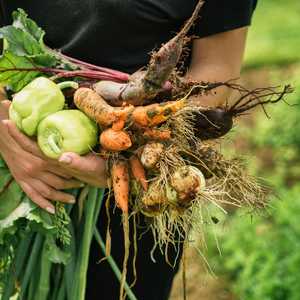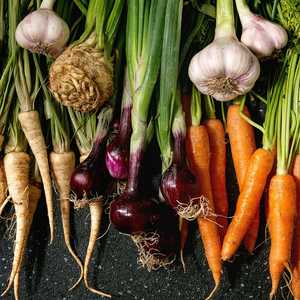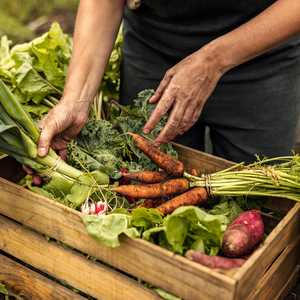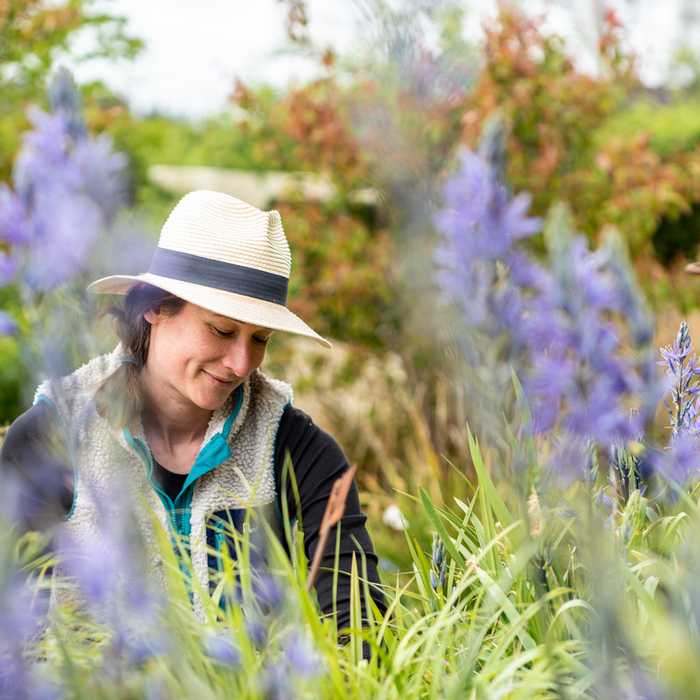Home Grown by Anna Sissons
“The glory of gardening: hands in the dirt, head in the sun, heart with nature. To nurture a garden is to feed not just the body, but the soul.” – Alfred Austin
Starting Young
When I was 10 years old, I meticulously planned the design of my first “vegetable and flower garden” and then set to work clearing an unused corner of my parents’ productive kitchen garden. Dad rotavated the soil after which I raked it to a fine tilth and spread the compost. I then sectioned off different areas with rows of flint stones. The finishing touch was a central herringbone path from reclaimed bricks I found about the garden.
Best in Show
The vegetable growing was mostly successful and much to my parents’ pride, I won Best in Show at the village fete for my iceberg lettuces. They were huge. I have grown my own ever since, wherever I have lived. Even when it was a tiny balcony in Barcelona for my tomatoes. When I first started, I have to admit that I wasn’t so interested in the actual eating of the produce. What got me excited was a germinating seed, a thrill which never diminishes. My taste buds are a little more grown up now and it gives me huge satisfaction to fill my family’s bellies with home produce, and also to pass it on to neighbours and friends. I defy anyone not to grin from ear to ear when presented with a homegrown marrow (which will inevitably sit on their kitchen sideboard for weeks!)
Be Kind to Yourself
Growing veg isn’t hard but it’s worth managing expectations. Don’t beat yourself up if your tomatoes split or if your carrots are a bit stubby. Over time, you’ll learn what works in your garden and whatever does grow will probably still taste great compared to a supermarket version, even if it does have nobbly bits. Better still, growing your veg will save you money and fuel, especially if the supermarket shelves remain empty.
Embrace Nature
Veg growing is the most time-consuming and labour intensive part of your garden so be ready to embrace it. However it needn’t be too manicured. If you can learn to live with a few weeds, you won’t be in a constant race against nature. Jeong kwan, a buddhist nun, farmer and chef (I urge you to watch her Chef’s Table), describes her vegetable garden as a wild garden, working harmoniously with nature. She says “It’s man’s greed that wants the plants to grow faster and grow bigger and prettier, but I let the plants in my garden grow as they want… and I eat them with joy”. Jeong Kwan has influenced chefs the world over including René Redzepi, of Noma in Copenhagen. Closer to home, Martin Crawford has created a forest garden in Devon where all manner of edible crops are grown from Trees, shrubs, perennials, short-lived plants and fungi, all integrated into one system. His book “ Creating a Forest Garden” includes descriptions of many uncommon edible plants suitable for our climates.
Growing Your Own
Once you have your expectations and a relaxed mindset. Here are some other tips to anyone starting out with growing their own:
- Start off small and build on it in subsequent years. Perhaps choose 5 veg which you really enjoy eating and look for varieties suited to beginners which are disease resistant and heavy croppers.
- Make a plan which will guide you through when to plant what and what jobs to tackle throughout the year. There are some excellent books and resources to help with this, “Charles Dowding’s Calendar of Vegetable Sowing Dates” is one such example and I now use his “no dig” approach to all my veg growing.
- Study your soil and in the spring, prepare it for planting with a generous mulch of compost or well-rotted manure. If you’re organised, you can cover your veg patch with cardboard to suppress the weeds before sowing and transplanting. Invest in good, organic compost which will retain moisture and better still, begin your own compost for future crops. My husband Woody has a helpful compost blog entry to guide you on this.
- Plan how you will irrigate your vegetables. This summer is set to be another dry one so harvest rainwater if you can and ensure any watering is targeted where it is really needed. If you know you will struggle to water frequently, plant accordingly and go generous on the mulch as this will lock moisture in. Try perennial vegetables such as rhubarb, artichokes and asparagus which will survive better in drier conditions.
- Plant companion plants and flowers to attract the pollinators, I grow statice which gives me masses of flowers, some of which I then dry and give away during the bleaker months. Fill gaps with creeping plants such as nasturtium which will keep the soil cool.
- The Native American “Three Sisters” method is a good place to start. Grow sweetcorn, up which beans are trained, then squash creeping around underneath to provide a natural mulch to suppress weeds and keep moisture in.
- Growing seeds is exciting and a fantastic antidote to lingering winters. But try not to get ahead of yourself, tomato plants grown too early will struggle and you’ll be playing catch up later.
- In place of canes, use string trellising to support your greenhouse tomatoes. It is less fiddly and will give you more time to enjoy munching them:
1. Tie a string to the top of the greenhouse
2. Pin the string to the ground with a peg
3. Plant tomato and wind the stem up the string.
4. Continue to wind as the tomato gets taller
You don’t have to restrict your veg to a veg patch. I grow rhubarb and currants among other shrubs and salad vegetables among my flower beds where some may plant annuals.
Unlike my ten-year-old self, enjoy eating your produce and turn the surplus into sticky jams and chutneys.
Bon appetit!
With Many Thanks to Anna Sissons for the Blog
Anna Sissons is the gardener at The Sitting Spiritually Garden along with her husband, Woody. She also works as a garden designer in Dorset and Devon
ANNA SISSONS GARDEN DESIGN
07834240526
To visit the Sitting Spiritually Garden please call us to make an a time to visit. Viewings are strictly by appointment only.
Posted on March 14th 2023




